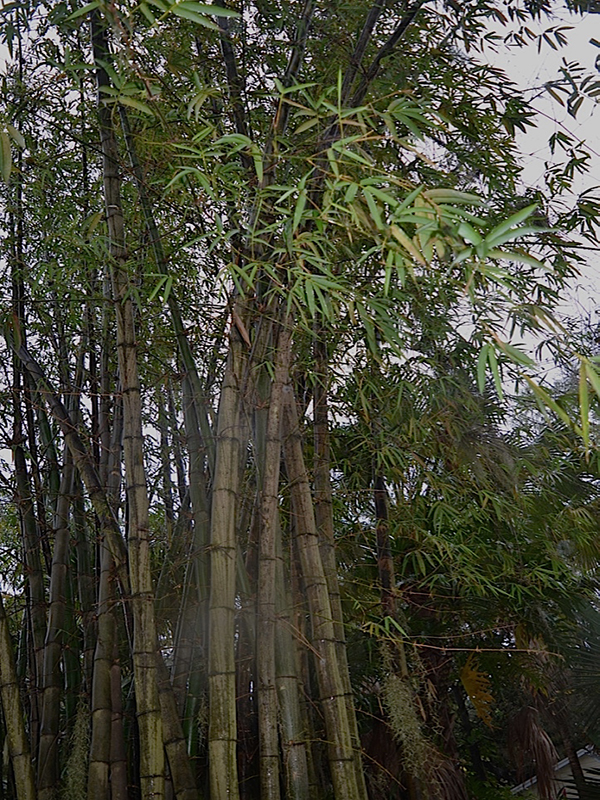| Landscape | Planted as fences and hedges. It is also planted as a measure for erosion control. |
| Propagation | Propagate through clump division, by rhizome, stem and branch cutting. |
| Cultivation | Plant prefers a moist, fertile, humus rich soil in full sun or dappled shade in warm humid conditions, succeeds in a range of soil types. |
| Notable Specimens | Harry P. Leu Gardens, Orlando, Florida, United States of America. |
| Habitat | Grows mostly on river banks, road sides, wastelands, and open ground. |
| Bark/Stem Description | Bambusa vulgaris culms are bright green, glossy, erect below and arching above and have an average height between 10-20 m. Internodes are 25-35 cm long, and have an average diameter of 4-10 cm. Wall thickness ranges between 7-15 mm. Nodes are prominent, of which the lower ones are often with a narrow ring of roots and covered with brown hairs. |
| Leaf Description | Narrow leaves which are on average 15-25 cm long and 2-4 cm wide. |
| Flower Description | Flowering is uncommon in Bambusa vulgaris. When a stem flowers, it produces a large number of flowers, but no fruit. |
| Texture Description | Several to many clustered branches with 1-3 larger dominant branches. |


